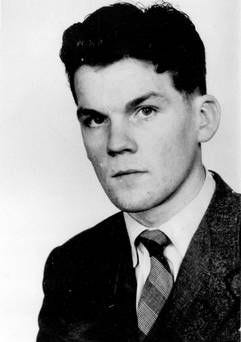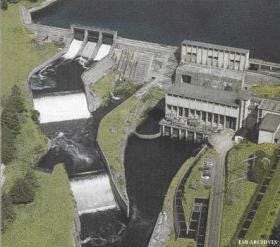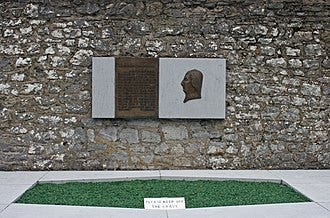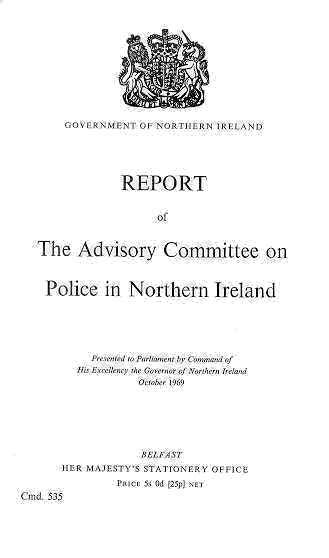
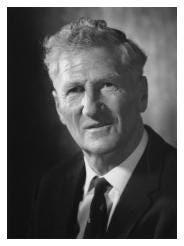
In October 1969, British progressive rock band King Crimson released their debut album ‘In The Court Of The Crimson King’. This song contains the lyrics “The gardener plants an evergreen, whilst trampling on a flower”. This is an apt description of what was also happening in Northern Ireland at the time, where both sides of the conflict believed they were making a difference, but in essence, their actions were doing more harm than good.
Between the 9th and 10th of October 1969, James Callaghan, then British Home Secretary, made a second visit to Northern Ireland. Following meetings between Callaghan and the Stormont government, plans for further reforms were agreed upon in a communiqué. The matters covered included the establishment of a central housing authority, reforms to the Royal Ulster Constabulary (RUC) in light of the Hunt Report, reforms to the legal system and the issue of fair employment. You can read the statement in full here.
It was on the 10th that the Hunt Report was published. The Report recommended that the RUC should become an unarmed force, the Ulster Special Constabulary (The 'B Specials') should be disbanded, and a new RUC Reserve should be set up. It was also recommended that a fresh locally recruited part-time force should be established under the control of the British Army. This force would later become the Ulster Defence Regiment (UDR).
To oversee the reforms recommended in the Hunt report, Arthur Young was appointed as Chief Constable of the RUC. As anticipated by many, the publication of the report sparked serious rioting by Loyalists in Belfast in protest against the recommended disbandment of the ‘B Specials’.
On the day after the publishing of the report, the rioting led to more additions to the death toll in Northern Ireland. Three people were shot dead during street violence in the loyalist Shankill area of Belfast. Two were Protestant civilians, shot by the British Army;
George Dickie, 25. Shot at the corner of Shankill Road and Downing Street, Belfast.
Herbert Hawe, 32. Shot on Hopeton Street, Shankill, Belfast.
The third person killed was an RUC officer, shot by the UVF;
Victor Arbuckle, 29. Shot on the Shankill Road, Belfast.
It’s widely reported that Arbuckle was the first RUC officer to be killed in the Troubles.
Unrest continued in October, and on the 19th, Thomas McDowell, a member of the Ulster Volunteer Force (UVF), was badly burnt while planting a bomb at a hydroelectric power station near Ballyshannon, County Donegal. He was electrocuted as he touched a live cable whilst attempting to plant a bomb at the base of a pylon. Mr McDowell died from his injuries on the 21st of October 1969, aged 45. It’s reported that he was also a member of the Ulster Protestant Volunteers (UPV) a paramilitary-style organisation formed by Ian Paisley.
The UVF issued a statement saying the attempted attack was a protest against the Irish Army units "still massed on the border in Co Donegal". The statement added: "so long as the threats from Éire continue, so long will the volunteers of Ulster's people's army strike at targets in Southern Ireland".
The UVF kept their word, and on the 31st of October, exploded a bomb at the gravestone of Wolfe Tone (the founding father of Irish Republicanism) in Bodenstown, Sallins, County Kildare, Republic of Ireland. The blast occurred at 5:00 am and destroyed a headstone.
Recommended reading based on research for this instalment of our journey through The Troubles.
Lost Lives: The Stories of the Men, Women and Children Who Died as a Result of the Northern Ireland Troubles by David McKittrick.
It is the story of the Northern Ireland troubles; it is not concerned with political bickering but with the lives of those who have suffered and the deaths which have resulted from more than three decades of conflict. The authors are journalists. Over seven years they examined every death which was directly caused by the troubles. Their research involved interviewing witnesses, scouring published material and drawing on a range of investigative sources to produce this study. The book traces the origins of the conflict from the firing of the first shots, through the carnage of the 1970s and 1980s and up to the republican and loyalist ceasefires and beyond.
UVF: The Endgame by Jim Cusack & Henry McDonald.
Henry MacDonald and Jim Cusack provide a fascinating insight into the UVF’s origins, growth and decline. They follow the careers of some of the key players in the UVF, including Gusty Spence, Billy Wright and David Ervine. They catalogue the atrocities in which the UVF were involved, including the Dublin and Monaghan bombings; the emergence of the notorious renegade Shankill Butchers; and the various bloody feuds that have infected loyalism.
As we move into November 1969, we’ll take a look at more political moves, more bombings and reported splits in the IRA.



